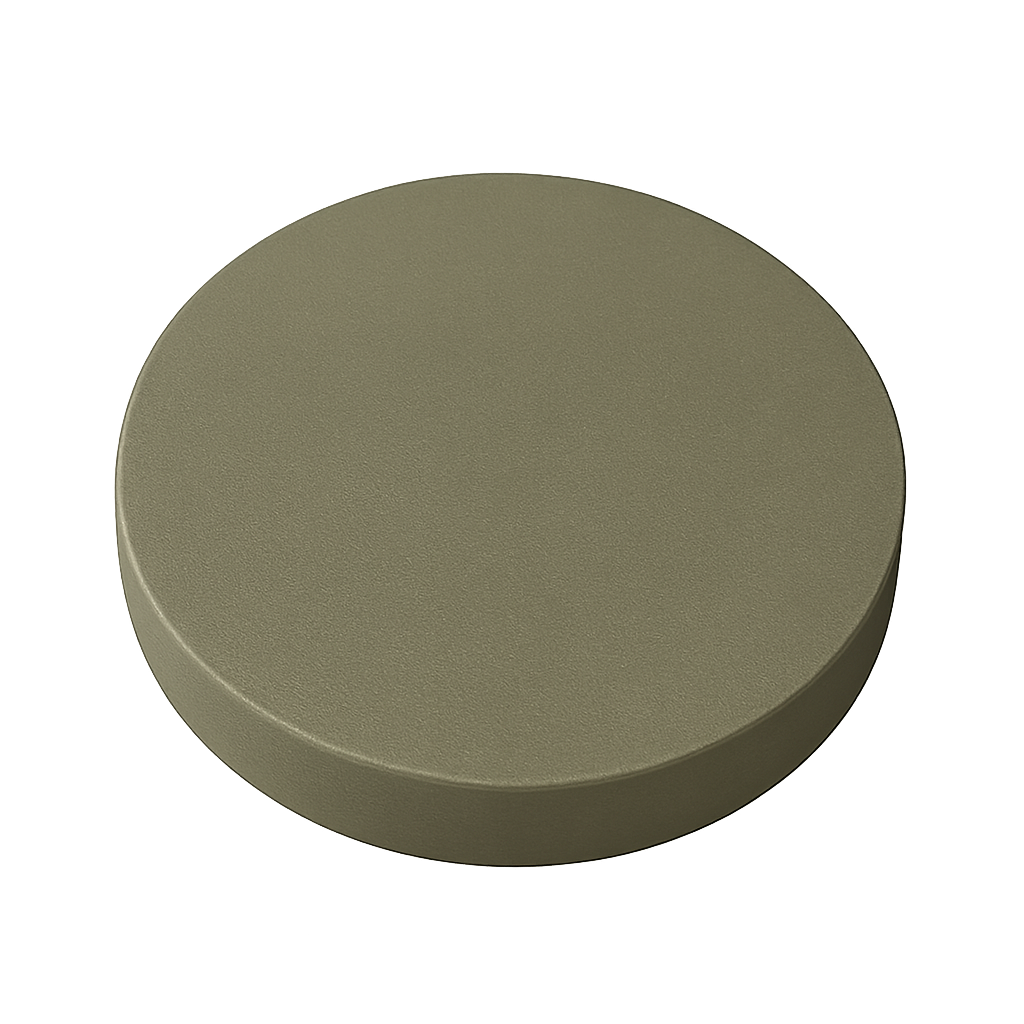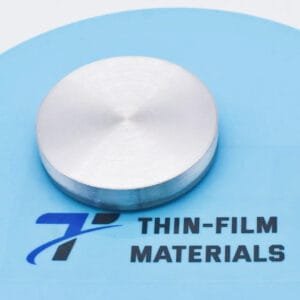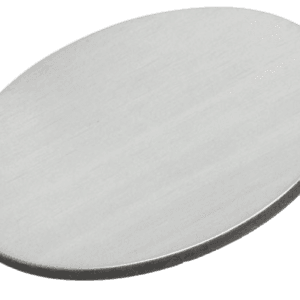Iron Germanium Telluride (Fe₅GeTe₂) Sputtering Target
Overview
Iron Germanium Telluride (Fe₅GeTe₂) is a layered transition metal chalcogenide with remarkable magnetic and electronic properties. As a member of the van der Waals (vdW) magnetic material family, Fe₅GeTe₂ has attracted significant attention in spintronics and 2D magnetism research. Its high Curie temperature, tunable magnetic anisotropy, and stability in thin-film form make it an ideal material for advanced magnetic and optoelectronic devices.
Key Properties
-
Chemical Formula: Fe₅GeTe₂
-
Purity: ≥ 99.9% (3N)
-
Crystal Structure: Hexagonal layered (vdW structure)
-
Magnetic Properties: High Curie temperature (> 270 K), ferromagnetic ordering
-
Electronic Properties: Metallic conductivity with tunable magnetic anisotropy
-
Film Quality: Supports epitaxial growth for atomically thin layers
Typical Applications
-
Spintronic devices (spin valves, magnetic tunnel junctions)
-
2D magnetism research for next-generation data storage
-
Magneto-optical devices
-
Fundamental condensed matter physics studies
-
Layered heterostructures with other 2D materials
Example Specification
-
Material: Iron Germanium Telluride (Fe₅GeTe₂)
-
Purity: 99.9% (3N)
-
Size: Diameter 1″ × Thickness 3 mm
-
Bonding: Available unbonded or bonded to copper backing plate
-
Deposition Method: RF or DC Magnetron Sputtering
Handling and Storage
Store in an inert atmosphere (argon or vacuum-sealed) to minimize oxidation. Avoid prolonged exposure to air and moisture. Handle with gloves in a clean environment to ensure film purity during deposition.
| Order Now | Fe₅GeTe₂ Target 3N 1"*3mm |
|---|
Related Products
Related products
FAQ
What is a sputtering target?
It’s the source material (in solid form) used in sputter deposition to eject atoms or molecules that then form a thin film on a substrate.
What materials are used to make sputtering targets?
Targets can be pure metals (e.g., gold, copper, aluminum), ceramics (e.g., Al₂O₃, SiO₂, TiO₂), alloys, or composites—chosen based on the film’s desired properties.
How are sputtering targets manufactured?
They are produced by processes such as melting/casting for metals or sintering (often with hot isostatic pressing) for ceramics and composite targets to ensure high density and purity.
How does sputter deposition work with these targets?
In a vacuum chamber, a plasma (typically argon) bombards the target, ejecting atoms that travel and condense on a substrate, forming a thin film.
What factors affect the life and performance of a sputtering target?
Key factors include the target’s purity, density, grain structure, and the sputtering yield (i.e. how many atoms are ejected per incident ion), as well as operating conditions like power density and gas pressure.
How do I know when a sputtering target needs to be replaced?
Operators monitor target erosion (often by measuring the depth of the eroded “race track”) or track total energy delivered (kilowatt-hours) until it reaches a threshold that can compromise film quality.
Why do some sputtering targets need to be bonded to backing plates?
Fragile materials (such as many ceramics or certain oxides) and precious metals often require a backing plate to improve cooling, mechanical stability, and to allow thinner targets that reduce material costs.
What is the difference between DC and RF sputtering for targets?
DC sputtering is used for conductive targets, while RF sputtering is necessary for insulating targets (like many oxides) because it prevents charge buildup on the target’s surface.
How does reactive sputtering differ from standard sputtering?
In reactive sputtering, a reactive gas (e.g., oxygen or nitrogen) is introduced to form compound films on the substrate, but it may also “poison” the target surface if not carefully controlled.
Can I use customer-supplied powders to make sputtering targets?
Many manufacturers prefer to control raw material quality by sourcing their own powders; using external powders can risk impurities and inconsistent target properties.
What storage and handling procedures are recommended for sputtering targets?
Targets should be stored in clean, dry conditions (often in original packaging or re-wrapped in protective materials) and handled with gloves to avoid contamination, ensuring optimal performance during deposition.
What key parameters affect sputtering deposition rates?
Deposition rate depends on factors such as target material and composition, power density, working gas pressure, substrate distance, and the configuration of the sputtering system (e.g., magnetron design).





Reviews
There are no reviews yet.